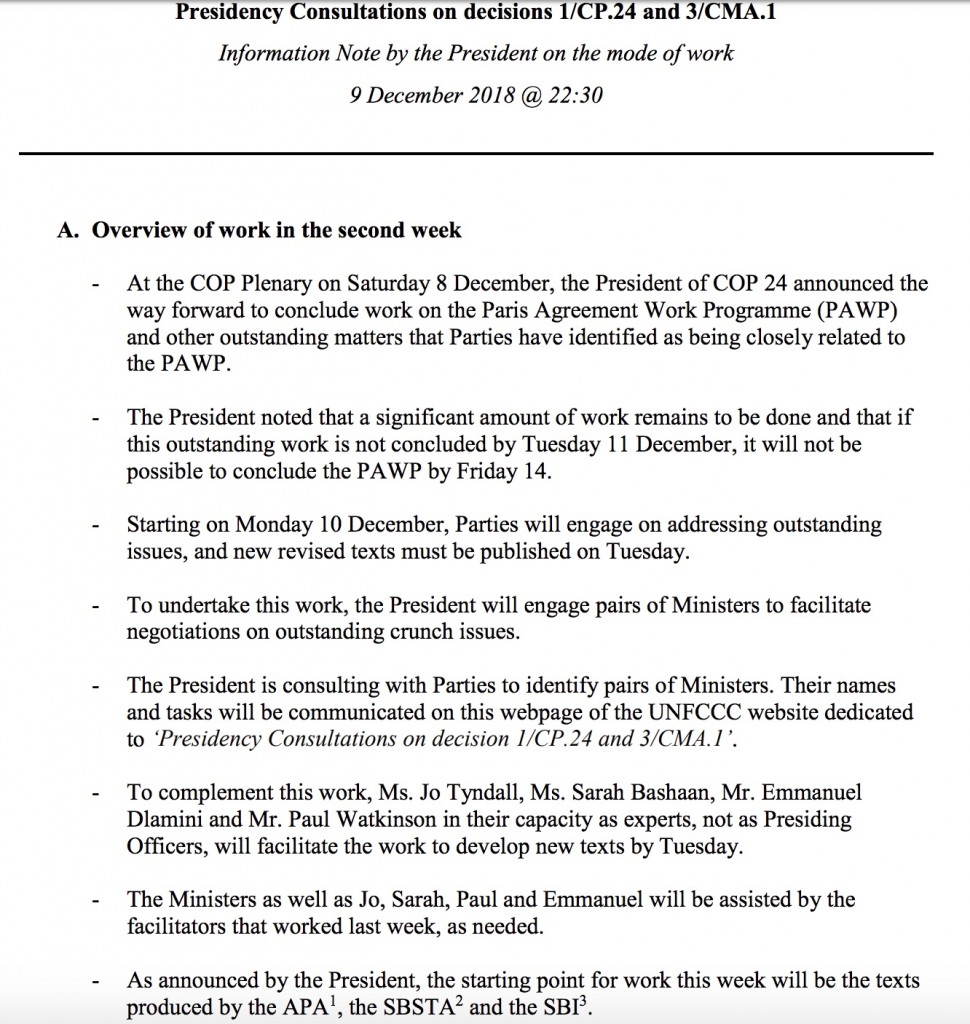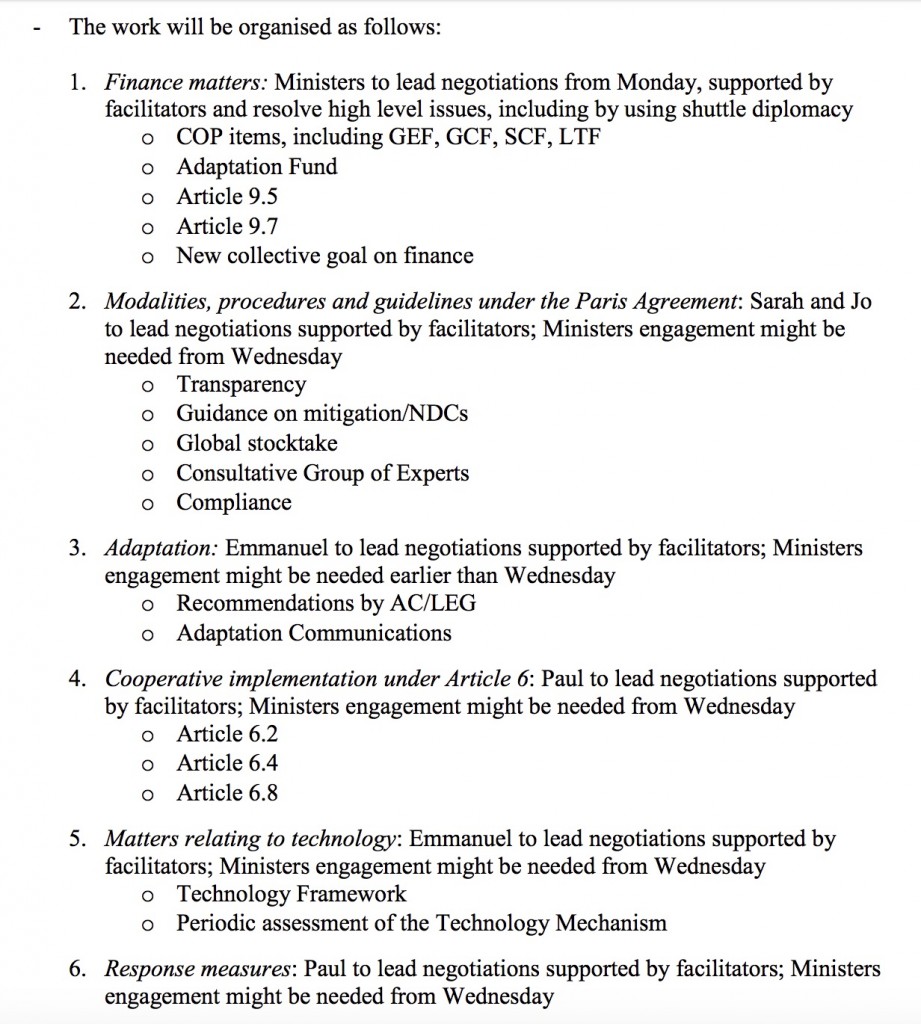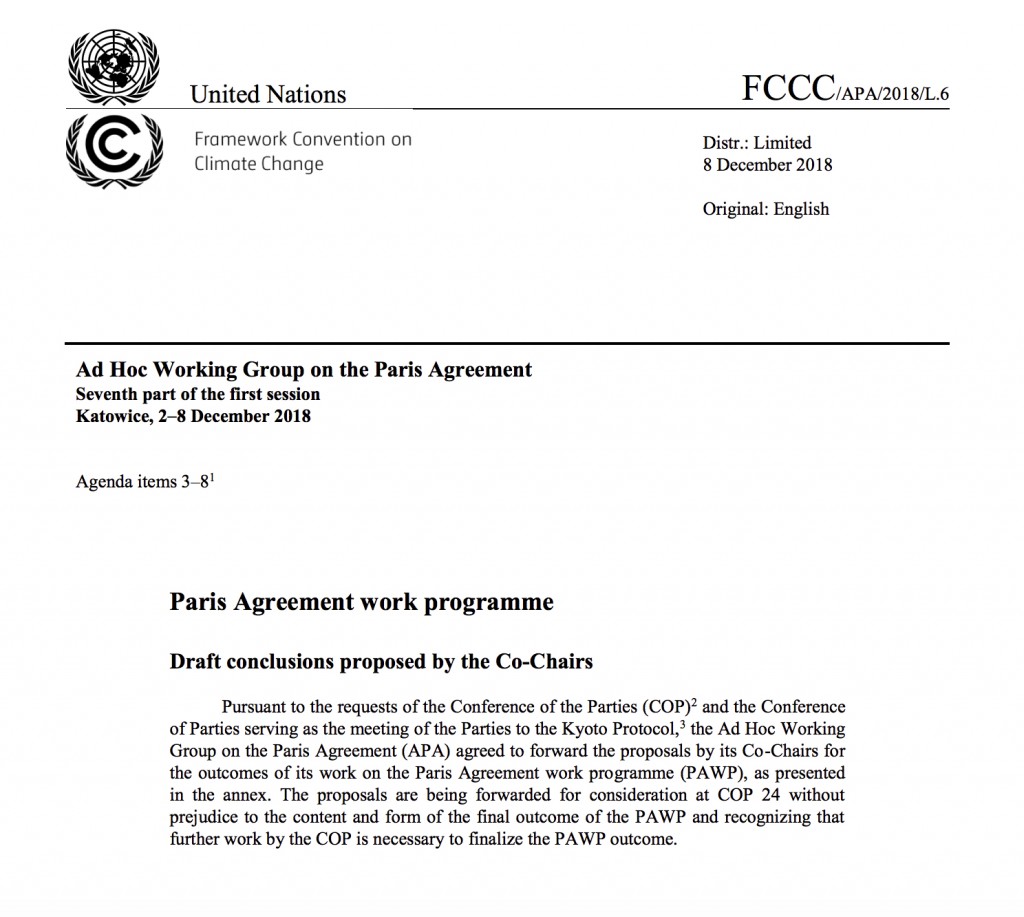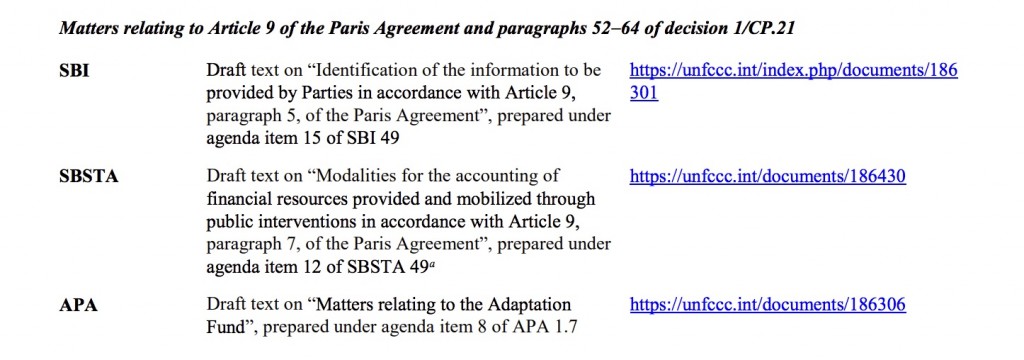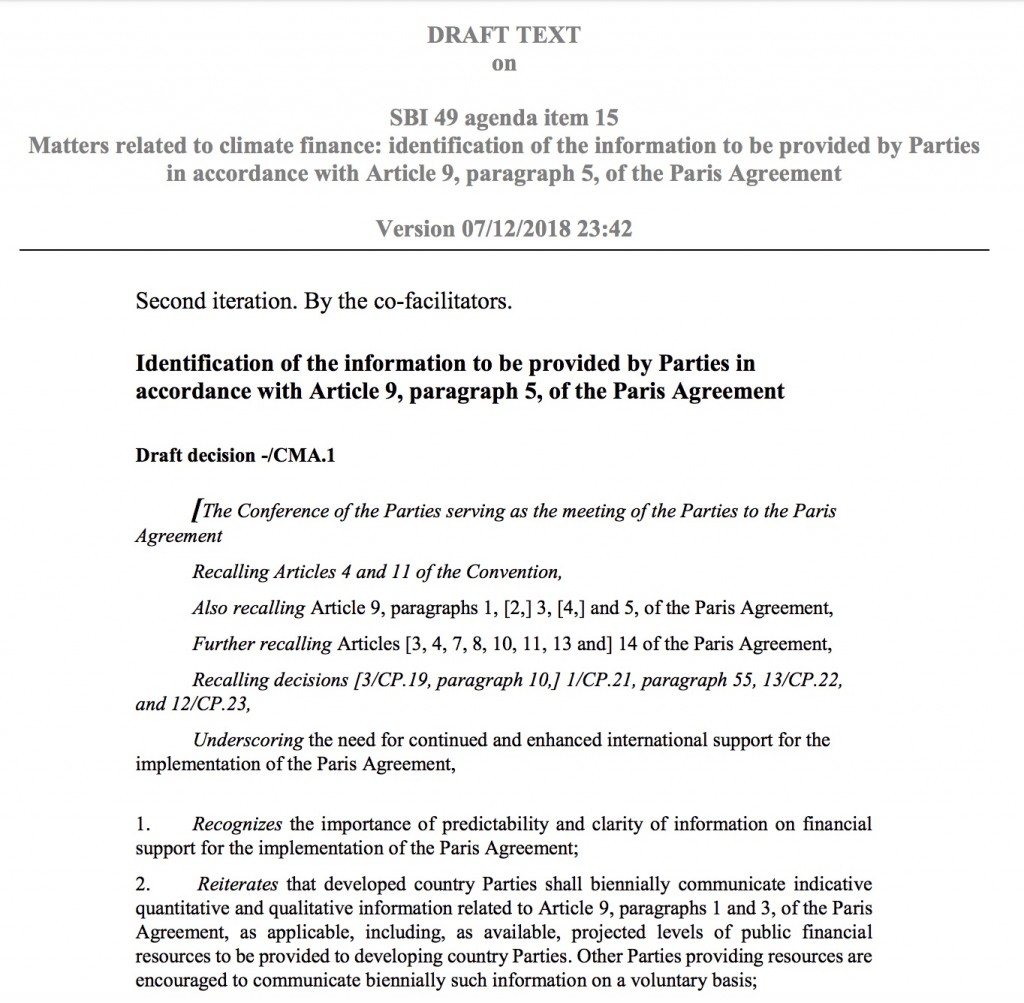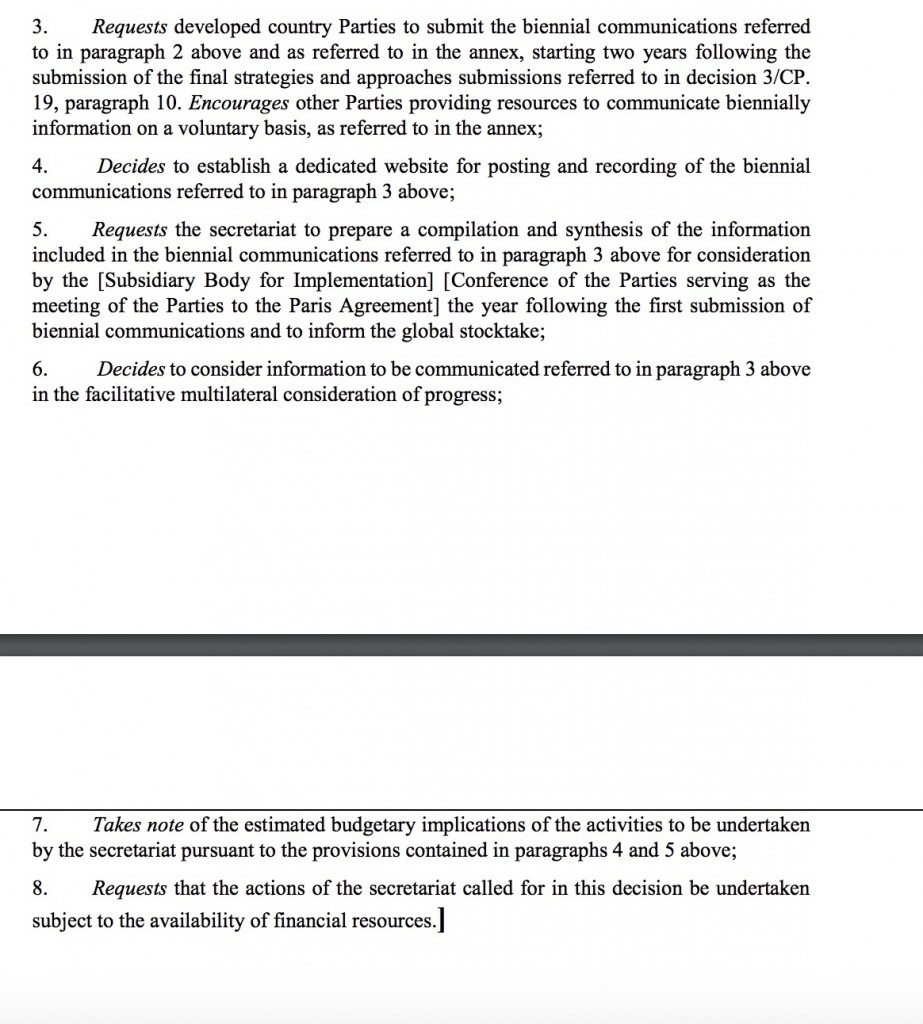RINGO (Research and Independent NGOs) is committed not to advocacy but to evidence-based policy making and good process. Beth Martin, one of the two “focal points” of RINGO, gave us a great overview of where we stand in the process and where to find relevant materials and texts. In case you’re interested in following along at home, here’s some of what Beth pointed us to…
WARNING: this is a geeky post. It’s long and detailed, but it might give you a sense of how this meeting operates (perhaps)—or at least as much of that operation as I’ve managed to gather here.
This second week kicked off with a note from the COP President–Eriko posted the link back on Sunday. That note said a couple of things:
This note is a wake-up call. We’re not moving fast enough! Time to bring in the big guns! No more open discussion! The officers in charge of the subsidiary bodies are going to act as experts helping facilitate dialogue, and pairs of ministers (from different countries) will also be in charge of moving things forward. Part of the problem here is that the basic text of any agreement has to be settled by the end of Tuesday because then the ministers or high-level negotiators have to work out political disagreements and then the agreements are sent to Nairobi to be translated into all the UN languages and checked multiple times—all before being released on Friday.
This lets us know what are the major issues still needing to be negotiated. You can actually trace the process of negotiation up to this point if you go to the home webpage of the conference: https://unfccc.int/katowice. That takes you to something that looks like this (only the first image is a green-y picture of the venue):
If you scroll down, on the right hand side, below the grid of options, you can see “Session Information” and under that “Session pages.” You may have to squint to see it here:
If you click on APA 1-7, that takes you to a page for the sessions of the Ad Hoc Working Group on the Paris Agreement:
Click on “APA 1-7 draft conclusions” and you can open a document (English) that looks like this:
And on later pages of this document, you can see the elements that have been under discussion:
This is how it works when a document is written by committee. You work on the problem parts rather than trying to write the document as a whole.
There’s been a lot of controversy over financing, especially “9.5” and “9.7”–Article 9, paragraphs 5 and 7. The debate on 9.5 addresses climate finance and 9.7 addresses “transparency” (also described as accounting). If you click on the link for SBI (Subsidiary Body on Implementation) on 9.5, you see the following:
Okay, that’s quite a few words to think about and argue over when you’ve got 10–20 people in a room negotiating. One key thing to know: brackets indicate something not everyone is wiling to agree to. So the entire document is in brackets at this point: nothing is set in stone. But the more detailed disagreements appear both in the preamble (before the numbered items), focused on which elements of the Paris Agreement are relevant to “recall,” and in the question of which part of the climate regime is officially going to look at the reports issued biennially (every two years): some people want the SBI (Subsidiary Body for Implementation) to be in charge; others want the synthesis to be sent to the CMA (Conference of the Parties serving as the Meeting of the Parties to the Paris Agreement). Overall, though, the text is pretty free of brackets, once you get past the fact that the whole thing is bracketed.
Here’s another example, from SBSTA (Subsidiary Body on Scientific and Technical Advice): again, the entire body of the text is bracketed, but beyond that, there’s debate about whether or not to include points one and two, five and six, and nine.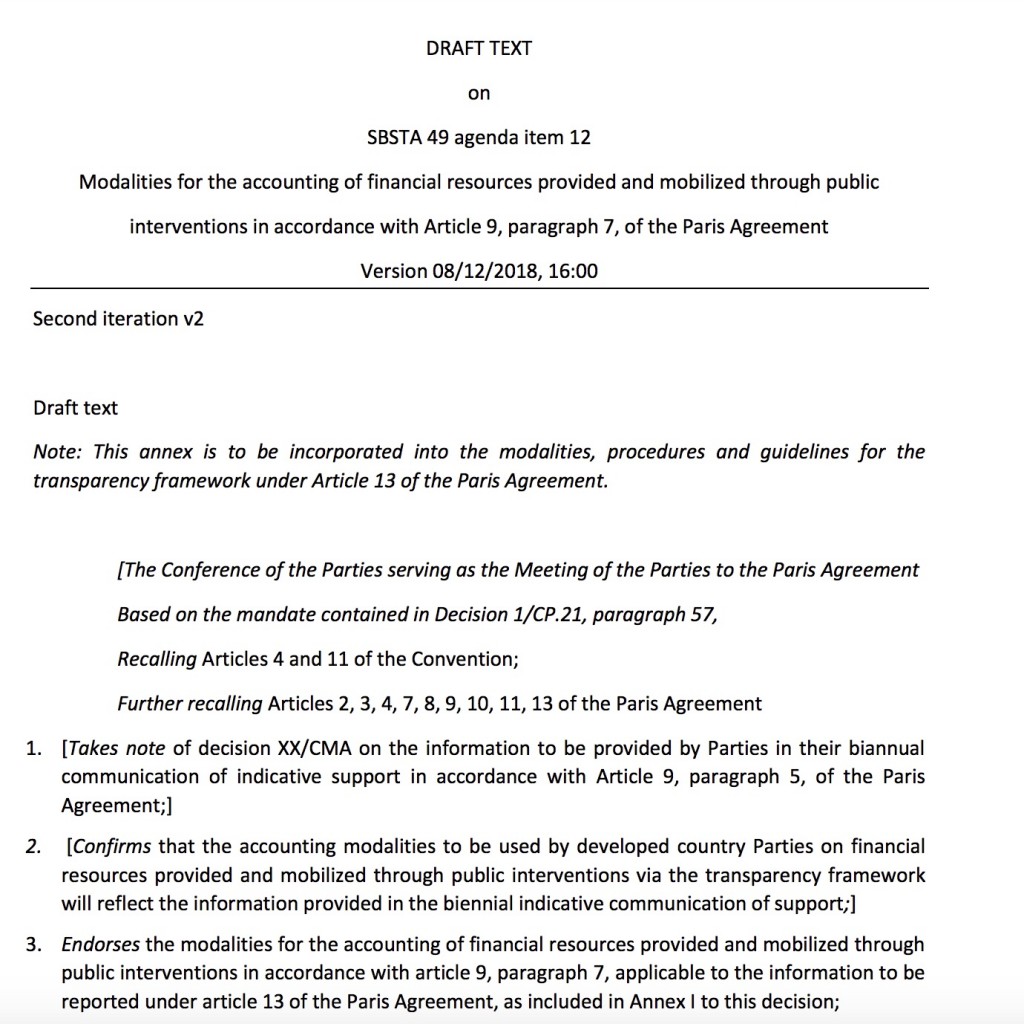
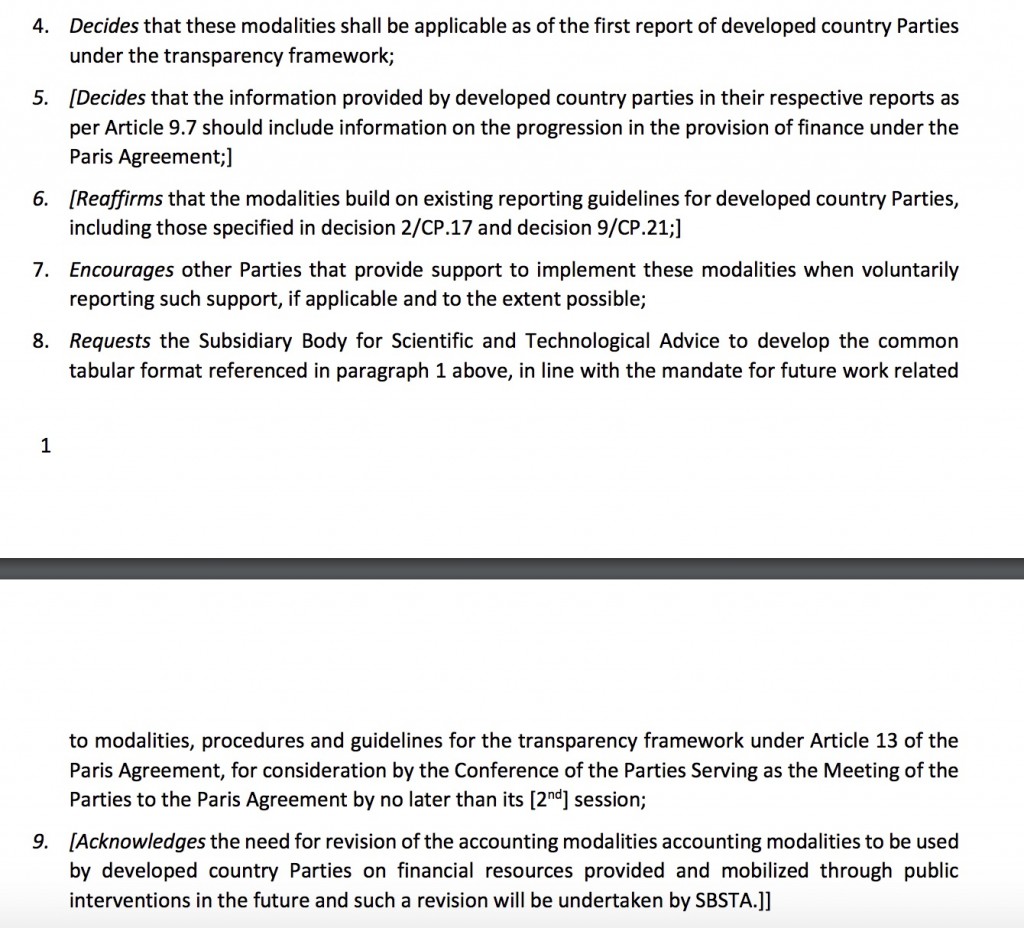
This is the text that was sent to the COP Presidency on Saturday, completing the work of the APA (Ad Hoc Working Group on the Paris Agreement). Add all of the pieces of this work together (and I’ve only included two examples from a much longer list) and you begin to see how complicated these negotiations are.
